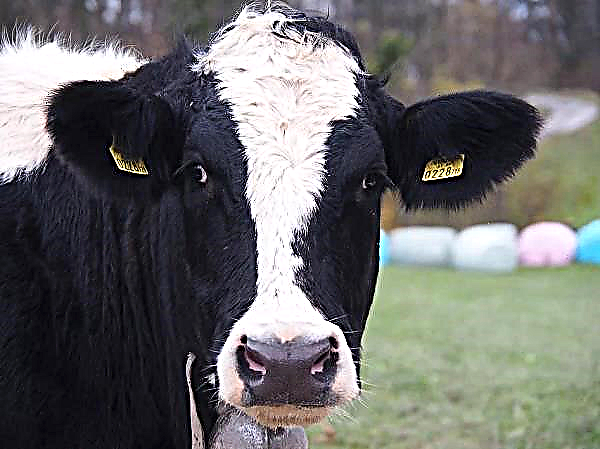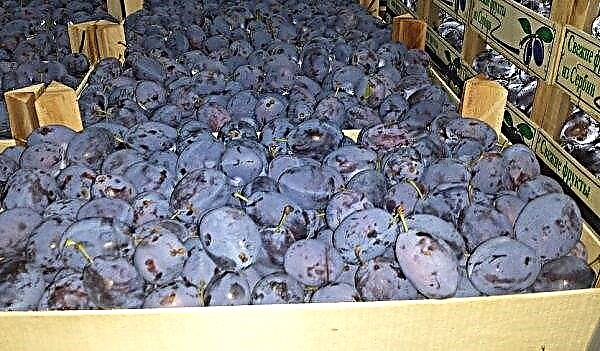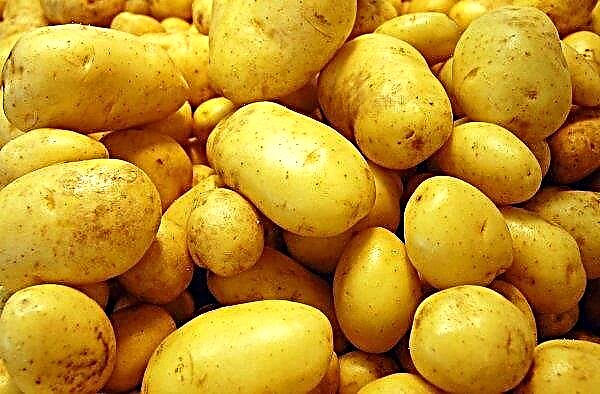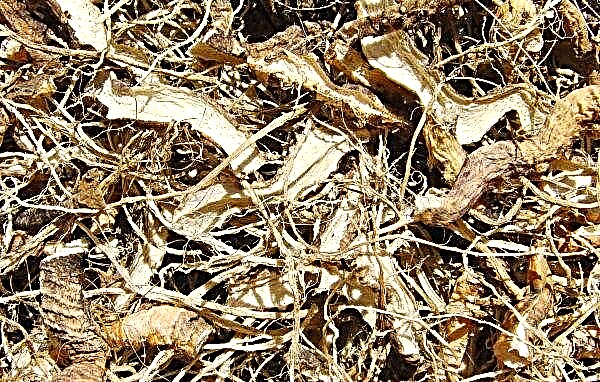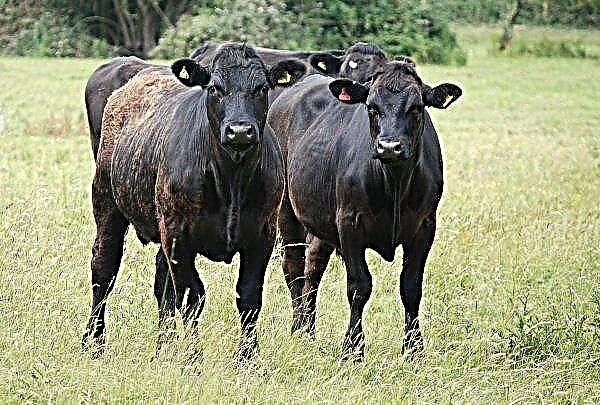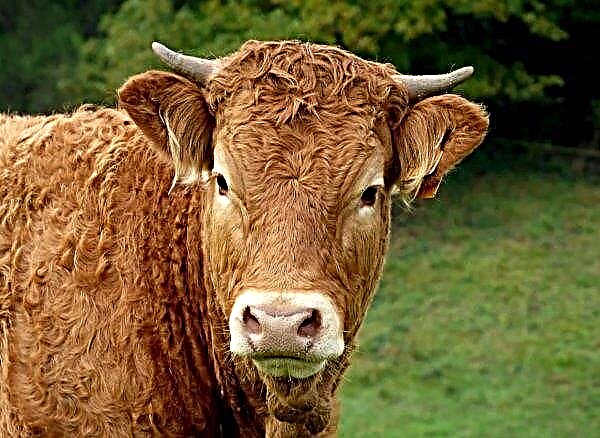After birth, calves from sterile conditions enter the world with bacteria and viruses that cause various diseases. Since babies still have weak immunity, their body is not able to cope with diseases common among cattle. Farmers need to pay close attention to the health and condition of young animals in order to provide timely qualified assistance. The purpose of the article is to talk about common diseases of calves, how to cope with them, what preventive measures are necessary to prevent them.
Classification of diseases
Diseases of calves are systematized by origin and are divided into:
- symptomatic;
- etiological.
Symptomatic
The described group of diseases is classified by their effect on the systems and organs of newborn calves:
- respiratory - caused by viruses, bacteria and parasites; affect the respiratory system of young animals;
- alimentary - arise due to gastrointestinal dysfunction;
- eye - arise as a result of inflammation of the conjunctiva of the eye;
- other diseases.

Etiological
This category of diseases is systematized in accordance with the causes of their appearance, given the predominant lesion of an individual organ.
The following diseases are distinguished in this group:
- infectious - caused by microorganisms, fungi and viruses; infectious diseases are considered especially dangerous, which can affect other types of domestic animals, as well as humans;
- non-infectious - arise as a result of violations of the gastrointestinal tract due to improper diet, as well as violations of the rules for keeping animals and caring for them.
Did you know? Calves, like adult cows, have a well-developed sense of time. A well-organized daily routine will contribute to their good development and well-being.
Diseases of calves, their symptoms and treatment
The following is a description of the diseases that calves most often suffer from, the symptoms by which they can be identified, and possible treatments.
Respiratory
There are such types of respiratory diseases in calves (they are considered common):
- Bronchopneumonia and pleurisy. The bronchial tubes, lobes and lining of the lungs become inflamed, which is accompanied by the accumulation of serous exudate in the alveoli and bronchi. There are three forms of the disease: acute, subacute, and chronic, which are expressed by pallor of the mucous membranes, densification of the lung tissue with lesion lesions, hyperemia of the upper respiratory tract, enlarged lymph nodes, and exhaustion. The treatment is carried out by a veterinarian who prescribes antibiotics (Streptomycin, Penicillin, Cephalotin, Erythromycin) in recommended doses. Preventive measures of the disease are the creation of acceptable conditions for the maintenance and nutrition of pregnant cows and calves (good ventilation, vitamin top dressing, sufficient milk volume for calves); farm equipment with clinically and laboratory healthy young animals; compliance with the sanitary regime in rooms where animals are kept (disinfection); timely detection and treatment of diseased animals.
- Cough due to tuberculosis. The disease is acute and subacute and is accompanied by the following symptoms: fever (up to 40 ° C), severe cough with exhalation and exertion, difficulty breathing, wheezing. Medical measures for this disease are not applied: slaughter of livestock, disinfection of places of detention and compliance with the prescribed veterinary and sanitary standards are done. Tuberculosis prevention measures include: staying on a monthly quarantine of newly arrived animals, prohibition of contacting sick animals with people, periodic studies are carried out using tuberculin, regular disinfection of rooms.
- Cough as a sign of helminthiasis (dictiocaulosis). Caused by Dictyocaulus nematodes parasitizing in the bronchi. Clinical signs of infection include a decrease in appetite, diarrhea, a depressed state, painful coughing with sputum production increasing in strength, surface and rapid breathing with wheezing, discharge from the nasal passages, fever up to 40-41 ° C, emaciation and anemia, swelling in the chest area cells on the limbs and submandibular region. Dictyocaulosis is treated using inhalations with monochloride iodine (Monclavit-1), as well as anthelmintic drugs (Nilverm 20%, Tetramizole, Fenbendazole), the dosage of which will be prescribed by a veterinarian. Preventive measures are the availability of a separate plot for grazing young animals up to a year, isolation from adult livestock, and keeping calves not in a marshland.
- Salmonellosis Infectious disease accompanied by fever, gastrointestinal upset and lung damage. In the acute course of the disease, there is a high temperature (41 ° C and above), impaired heart rate, heart rate above 145 bpm), conjunctivitis, weakness and lethargy, impaired appetite, diarrhea with a fetid odor, grayish strands in the feces and streaks of blood , a sharp decrease in the volume of urine, urine is cloudy. In the chronic course, manifestations from the gastrointestinal tract weaken and respiratory symptoms begin to intensify: serous-purulent outflows from the nasal passages, mild coughing, smoothly turning into a painful and moist cough, hard and increased breathing with wheezing, signs of pneumonia. For treatment, sick young animals are separated from the rest of the livestock and complex therapy is prescribed to suppress the causative agents of the disease (Salmonella), to facilitate intoxication, and restore the natural functioning of the digestive tract and respiration. For this, the veterinarian will prescribe a multivalent antitoxic serum with antibiotics in combination (Tetracycline, Cephalosporin, Levomycetin), as well as sufanilamides (Norsulfazole, Etazole, Sulcimide). In order to prevent salmonella infection, the following measures are carried out for calves: from the first days of life, they use acidophilic broth culture (ABA) and propionic acidophilic broth culture (PABA) once a day, vaccinate with a formolvac vaccine concentrate, isolate the sick livestock, and thoroughly disinfect cows.
Did you know? Cows, like some other large animals, are able to sleep in a standing position. This is due to the special structure of the knee joints, the bones of which are able to "lock" in a certain position, which allows the cows to relax the remaining muscles in the body.

Intestinal
Intestinal pathologies are especially dangerous for the life of animals, since they are caused by a violation of the function of the gastrointestinal tract and are able to quickly spread to a healthy population, which leads to mass death of animals.
Intestinal diseases of young animals are presented:
- Dyspepsia. The most common non-infectious disease of calves, in which the gastrointestinal tract is affected. The cause of the disease is an incorrect diet of pregnant females, untimely feeding of young animals with colostrum and improper care. Symptoms are diarrhea and dehydration, refusal to drink and eat, pallor of mucous membranes, general weakness, calves can lick the walls of the barn. The treatment of dyspepsia consists in a reduced dose of colostrum and dry food, soldering with a 1% saline solution and a water-milk mixture (1: 1), adding raw egg proteins to the diet; the use of decoctions of oak bark and yarrow. For preventive purposes, herbal decoctions (peppermint, elecampane, yarrow) are added to the young swill.
- Diarrhea. May occur as a result of infection with a strain of the E. Coli virus, as well as rotaviruses and coronaviruses. Symptoms of infection with these pathogens are: the appearance of bloody stools in calves, complete exhaustion, general sepsis; yellow-green feces, fever, mouth ulcer, foaming saliva, drooping eyes, dry skin, gritting of teeth, lethargy. The treatment is prescribed by a veterinarian and contains a number of vaccines, antibiotics and serums (including Tetracycline, Levomycetin, Trichorol, Ditrim, Nitox, burnt alum, Nitox, Katozal), as well as sorbent and probiotics. It is also appropriate to use folk remedies based on herbal preparations. Methods of prevention from diarrhea are the use of sanitary and hygienic measures for the care and maintenance of calves, timely vaccination, plentiful feeding of young animals with high-quality colostrum, protecting calves from contact with manure of other animals.
- Gastroenteritis. The disease is expressed by a prolonged gastrointestinal upset caused by poor-quality (dirty) or sour feed, as well as the transfer of animals to new food and swill. The main symptom of gastroenteritis is a weakening of the intestines, accompanied by diarrhea. The treatment consists of several stages: exclusion of milk from the diet, on the first day, drinking with one percent saline, and on the second calves they are soldered with saline in a ratio of 1: 1, on the third day they give a swill from salted water with milk (1: 4); they transfer to a 5-time feeding with one feeding, which includes 1 liter of strong tea solution, 10 g of salt and three raw chicken proteins. Prevention will be the exclusion of the causes of the described pathology.
- Coccidiosis The disease occurs due to the penetration into the body of a calf of parasites - eimeria, localized inside the digestive tract. Pathogens enter the body, mainly in the summer, when grazing in a wetland or while drinking from an open reservoir. In the acute form of the disease, the following symptoms are observed: general fatigue, lack of appetite, tearing, loose stools, fever, bruxism (gnashing of teeth), the appearance of ulcers in the intestines. Coccidosis is treated in the following ways: the animal is soldered with a milk solution with a dose of potassium sulfate; disinfection of stalls. In order to prevent animals, they are transferred to quarantine, grazing in a wetland is excluded, running water is used for drinking, and keeping conditions are optimized.
Important! It should be borne in mind that even with the treatment of calves from coccidosis, they remain its distributors.

Eye diseases
Since calves' eyes are an extremely sensitive and vulnerable organ, they are often exposed to the negative factors that cause their disease.
Here are some of them:
- Conjunctivitis. It is caused by various factors - mechanical damage, allergies, infections, chemical exposure, impaired function of the lacrimal glands. Insects (ticks, flies) can bring bacteria into the eyes. The disease has several manifestations: catarrhal, phlegmonous, purulent, follicular. Symptoms are as follows: a slight increase in temperature, red conjunctiva, swollen eyelids, photophobia, accompanied by half-closed eyes, minor hemorrhages from the eye vessels, with a chronic form, a bluish color of the eye mucosa. For treatment, it is necessary to wash the conjunctival sacs with a heated solution of boric acid or furatsilina; purulent course is treated by the introduction of antibiotics or a 30% solution of sulfacil into the lacrimal sacs. Bury the eyes with zinc sulfate or resorcinol solution; the follicular form is treated by treating the follicles with lapis, and then washed with a solution of sodium chloride. An ointment based on tetracycline or novocaine is used. Preventive measures will be the exclusion of the causes and factors that cause this disease.
- Corneal inflammation (keratitis). This pathology in calves can be caused by inflammation of the cornea due to mechanical damage, thermal burns, chemical attack and infections, in which inflammation of the cornea is one of the symptoms. Clinical signs of keratitis are dullness on the surface of the cornea, whitening or the appearance of a gray-yellow color of the cornea, photophobia, lacrimation, serous discharge from the eyes, minor hemorrhages of the eye blood vessels. Treatment is carried out in the following way: a conjunctival sac is washed with a solution of boric acid; An antibiotic or sulfonamide is introduced into the bag. With thirst, a one percent solution of dionine is instilled; prescribe vitamins (Retinol, Trivitamin). The exclusion of the effects of negative factors on the health of the eyes of young cattle will prevent corneal inflammation.

Other diseases
There are also other frequently occurring diseases of young cattle, which contribute to their lag in growth and development.
Among them:
- Avitaminosis. The disease develops as a result of a lack of vitamins in the body or because of their poor absorption due to gastrointestinal diseases. There are two types of vitamin deficiency: due to a lack of vitamin A and a lack of vitamin D (rickets). In the first case, the disease is observed in individuals who do not receive carotene with mother's milk. In this case, the following symptoms are observed: pale mucous membranes, exhaustion, dry skin, ruffled hair, sore eyes, low vision. Vitamin A is treated by injecting vitamin A (50-100 thousand units) once a day for 5 days. To prevent this violation, it is necessary to properly feed young animals, feeding vitamin supplements in the form of fish oil or carrots with food. In the second case, with rickets, the following symptoms are observed: young growth starts drinking urine, chewing manure, rags, skin; they lie more than move; weight loss and poor growth, curvature of the extremities, loss of coat are observed. For treatment and prevention, calves must be given bone meal and fish oil, as well as exposed to artificial or natural ultraviolet radiation.
- Skin diseases. With this pathology, calves experience hair loss. Among the causes are fungal (lichen) and parasitic diseases (the presence of hair-eaters, demodecosis, and poo-eaters). Lichens are treated immediately after detection to prevent their spread throughout the livestock (human infection can also occur). Fungal lesions are lubricated with an antiseptic. Affected animals are isolated from the rest of the herd, cowsheds are subjected to disinfection. Parasitic diseases not only spoil the appearance of animals, but also weaken their immunity, as parasites allow toxic saliva into the blood of animals. The probability of spread of parasites throughout the herd is high. Parasitic infections are treated with a solution of chlorophos, ivermectin, dicresil emulsion (according to the instructions). Measures for the prevention of skin diseases in young cattle include quality control of feed, compliance with sanitary standards, timely removal of excrement and change of litter, regular treatment of premises with antiseptics, routine vaccinations, and a thorough examination of each individual by a veterinarian.
As can be seen from the above, young cattle can be affected by infectious and non-infectious diseases of various etiologies. Each disease has its own causes and symptoms. They are treated with different medicines and drugs based on medicinal plants and chemicals. Noncommunicable diseases do not require quarantine measures (in contrast to infectious diseases, which carry a danger of large-scale lesions).
They are treated with different medicines and drugs based on medicinal plants and chemicals. Noncommunicable diseases do not require quarantine measures (in contrast to infectious diseases, which carry a danger of large-scale lesions).
Important! In no case should animals be allowed to lick medicines applied to combat parasites or fungal infections.
General disease prevention
To prevent common diseases in young cattle, it is necessary to observe the general preventive measures:
- on the farm, give preference to year-round stall-free keeping of animals (with the presence of hard coating on the site);
- during the collection of the herd, conduct a preliminary examination of each individual for the presence of diseases;
- prevent parasitic diseases;
- cowsheds should be placed in dry places, on hills;
- keep calves dry and warm;
- provide a varied and nutritious diet;
- organize livestock drinking with running tap water;
- conduct regular and thorough cleaning of manure from cowsheds;
- heat collected manure and use it for fertilizer;
- monitor the cleanliness of feeders and drinkers;
- regularly (1-2 times a month) disinvasion and disinfection of the barn;
- to form groups of animals according to their age and state of health;
- timely place sick animals in quarantine, isolating from the general population;
- feed calves with grass feed only from a successful pasture;
- conduct regular vaccination with live and inactivated vaccines, hyperimmune sera, immunoglobulins and bacteriophages.
 All calf diseases must be distinguished in order to localize the problem in time. The owner needs to constantly cooperate with an experienced veterinarian who can provide timely assistance. A special role here is played by preventive measures, optimal conditions of detention, as well as a balanced, fortified diet.
All calf diseases must be distinguished in order to localize the problem in time. The owner needs to constantly cooperate with an experienced veterinarian who can provide timely assistance. A special role here is played by preventive measures, optimal conditions of detention, as well as a balanced, fortified diet.

